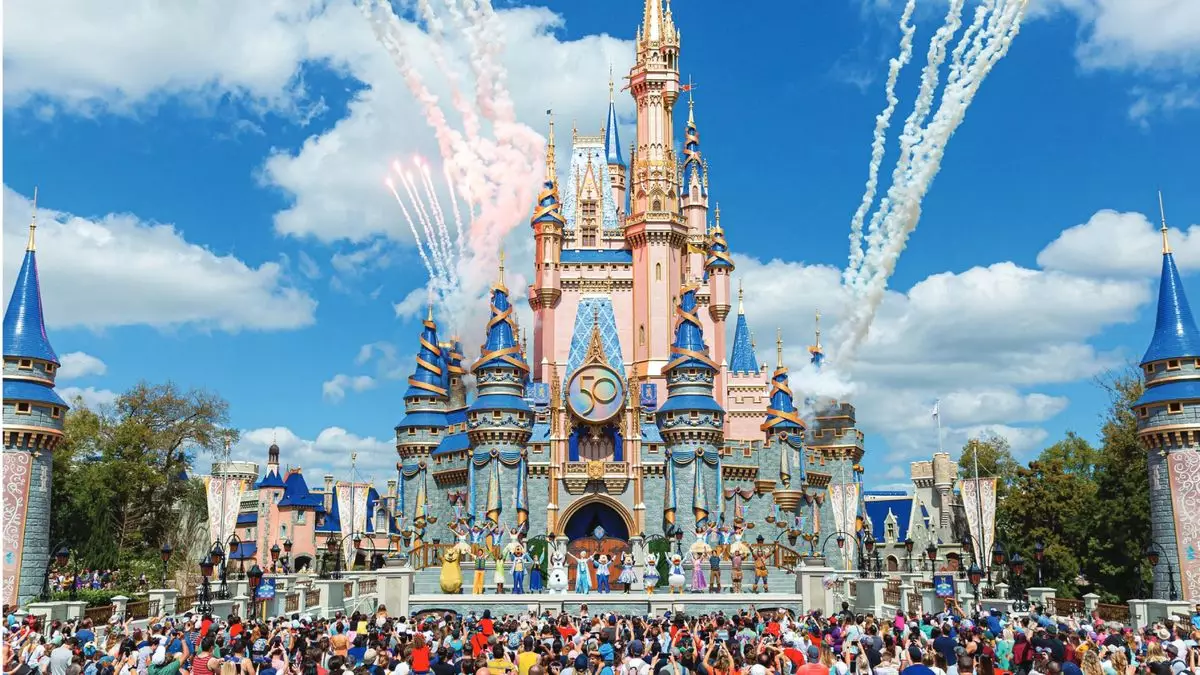When one thinks of Disney, enchanting characters and thrilling rides often come to mind. However, beneath the surface of its fairy-tale façades lies a complex economic juggernaut whose impacts reverberate far beyond the boundaries of its theme parks. Recent findings from a commissioned study by Disney reveal the staggering economic contribution of its resorts in Florida and California, aggregating to nearly $67 billion nationwide. This financial insight not only underscores Disney’s role as a pivotal economic player but also highlights the intricate relationship between tourism and local economies.
The Scale of Economic Impact
The study, conducted by the experts at Tourism Economics, presents a profound understanding of how Disney’s two primary resorts function as economic engines within their regions and across the nation. Michael Mariano, the head of Tourism Economics, articulates the monumental influence these parks wield, asserting that they are integral to both local and national economic health. It’s not merely about ticket sales and merchandise; the figures encapsulated in the report signify a broader economic vitality that extends into various sectors, demonstrating a holistic impact that merits deeper scrutiny.
Disneyland in California, for instance, boasts an economic impact of approximately $16.1 billion in fiscal year 2024. To contextualize this figure, Mariano juxtaposes it with consumer spending habits, revealing that this revenue is nearly equivalent to the total U.S. expenditure on pizza delivery in the same timeframe. Disneyland serves as the largest employer in Orange County, providing jobs for around 36,000 cast members and supporting over 102,000 positions throughout the region. As a cornerstone of the local job market, its economic ripple effects extend into hotel stays, restaurant visits, and transportation services that all benefit from the influx of tourists.
Deep-Dive into Economic Methodology
Tourism Economics utilized a comprehensive approach to quantify Disney’s economic impact, which includes direct, indirect, and induced effects. Direct impacts encompass all visitor-related spending within and around the parks, encapsulating everything from dining to retail. Indirect impacts derive from the supply chain, where local businesses thrive by providing goods and services to support Disney’s operations. Finally, the induced impacts come from the wages spent by employees working within the Disney ecosystem, further intertwining the resort’s economic contribution with local marketplaces.
For Disney World in Florida, the figures paint an equally robust picture, with an astounding $40.3 billion in economic activity reported for fiscal year 2022. This significant economic contribution supports around 263,000 jobs, showcasing how interlinked the resort’s operations are with state and national employment rates. The additional $10.2 billion generated outside Florida from purchases made by Disney World hints at the vast network of suppliers and vendors that the resort engages with, showcasing an expansive economic web stretching beyond its immediate geographic location.
Comparative Insight: Disney’s Global Influence
When comparing Disney’s economic prowess with other sectors or events, it becomes evident that the company’s resorts act as a burgeoning source of economic vitality. Mariano draws an imaginative parallel — the combined impact of Disney’s two resorts is reminiscent of the total U.S. consumers’ spending for major holidays like Valentine’s Day, Mother’s Day, and Halloween all rolled into one. Such analogies not only bring clarity to the magnitude of Disney’s economic presence but also foster a greater appreciation for its role in shaping consumer behavior and economic patterns.
Furthermore, this analysis invites a wider discussion on the significance of entertainment and tourism industries in economic recovery and stability, especially in unpredictable times. The resilience displayed by Disney amid fluctuations in travel trends illustrates the potential for theme parks to serve as catalysts for local and nationwide recovery efforts, emphasizing their role beyond mere amusement.
In this context, one must critically examine how much more significant the economic contributions could become if the resorts continue to expand and innovate. The underlying question remains: as we advance in a post-pandemic world, can Disney and similar entities leverage their influence to produce even more impactful outcomes for the communities surrounding them, ensuring sustained benefits for both local economies and the broader national landscape?


Leave a Reply